BTC has mainly remained range-bound between $55,000 and $60,000 since June, but that all could be about to change. The upcoming US elections in November and the continuation of the Fed's rate cutting cycle could lead to a significant improvement in sentiment in the fourth quarter, but a return to volatility.
We use implied volatility (IV) to measure past, present, and future cryptocurrency market sentiment. First, we revisit the August market crash and analyze falling IVs to understand the market reaction. We then use IV to analyze options market positioning and headwinds to gauge market sentiment in the fourth quarter.
What is IV?
Before we get into the analysis, let's briefly explain IVs and what they mean. IV is one of the most effective ways to determine risk in financial markets. It is a forward-looking indicator of the expected volatility of an asset over a specified period of time.
The IV is derived from the current market price of the option contract, known as the premium. An increase or decrease in premiums indicates an increase or decrease in demand. This change in demand indicates that traders are willing to pay more or less for a particular option, indicating potential price fluctuations in the underlying asset or increased risk perception.
To learn more about IVs and how to use IV tools, download our latest report on options market trends and join us for upcoming webinars.
Reducing risk through implied volatility
In early August, financial markets around the world were shaken by the Bank of Japan's decision to raise interest rates and weak economic indicators in the United States.
During this time, the cryptocurrency market experienced significant volatility, with BTC falling over 12% in the first weekend of August.
Looking at the IV during this market activity provides insight into how traders viewed the crash. Below, we will analyze BTC IV with a fixed expiration date of every month and show its evolution at a specific point in time. Short-term contracts have a higher IV than long-term contracts, which is known as an “inverse term structure.”
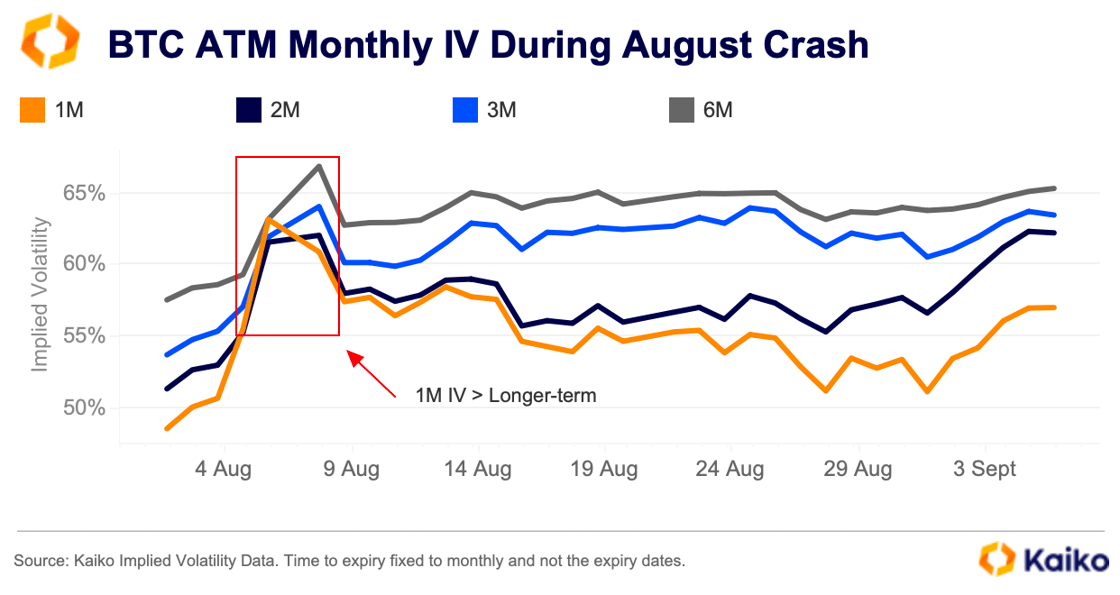
BTC's IV term structure reversed on August 4, the day before BTC fell below $50,000 for the first time since February. This indicates panic in the market and suggests an increased likelihood of a risk event occurring in the short term.
The term structure returned before the overall market recovered. However, IV continued to trend upward even after the decline. This shows that despite the BTC price rebound, there was still an increased risk perception in the market.
Visualize market crashes in real time
One of several ways to visualize IVs using data in Kaiko is to create IV surfaces. This also allows us to show how the IV changed in terms of strike price and time to expiry during the August crash.
You can see that on August 4, before the market turmoil intensified, the IV for out-of-the-money options with higher strike prices and longer maturities was still relatively high. However, the market had begun to price in a certain amount of risk in anticipation of large price movements.
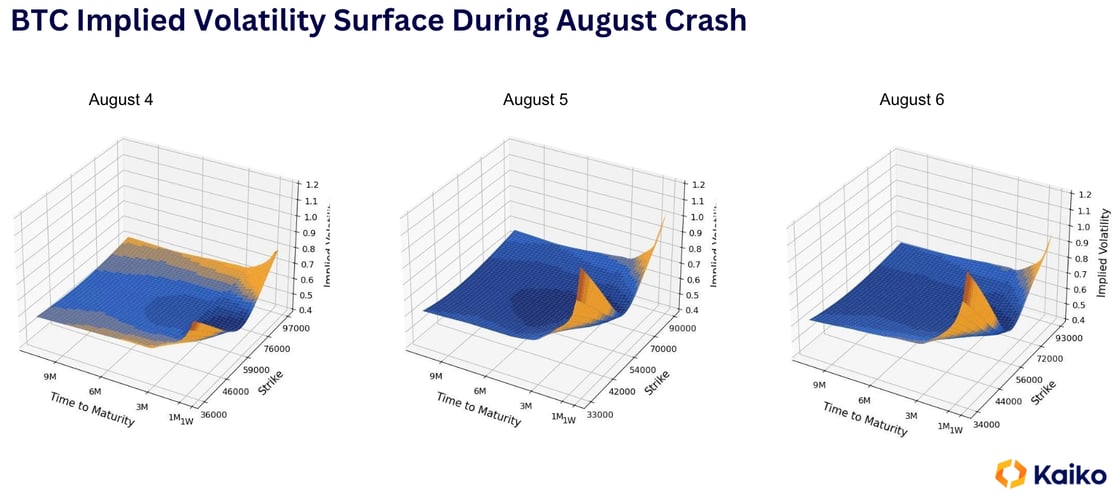
By the next day, Monday, August 5th, we can see a clear spike in IV (yellow) with higher strike prices for options expiring in the near future. The rise in short-term IV indicates that there was a growing demand for protection against sharp price fluctuations in the underlying asset, BTC. This was happening at a time when the market was showing signs of stress, symbolized by the hump on the IV surface.
What are the factors driving volatility in the fourth quarter?
Aside from increased volatility related to the August crash, the crypto market was relatively quiet in the third quarter. At least until last week, the U.S. Federal Reserve cut interest rates by 50 basis points and signaled two more cuts before the end of the year.
The central bank is scheduled to hold two more meetings before the end of the year, on November 7 and December 18. Last week's big rate cut increased risk-on sentiment, and the October 4 contract briefly reversed, as you can see in the chart below. Oct. 25 contract before returning to normal term structure.
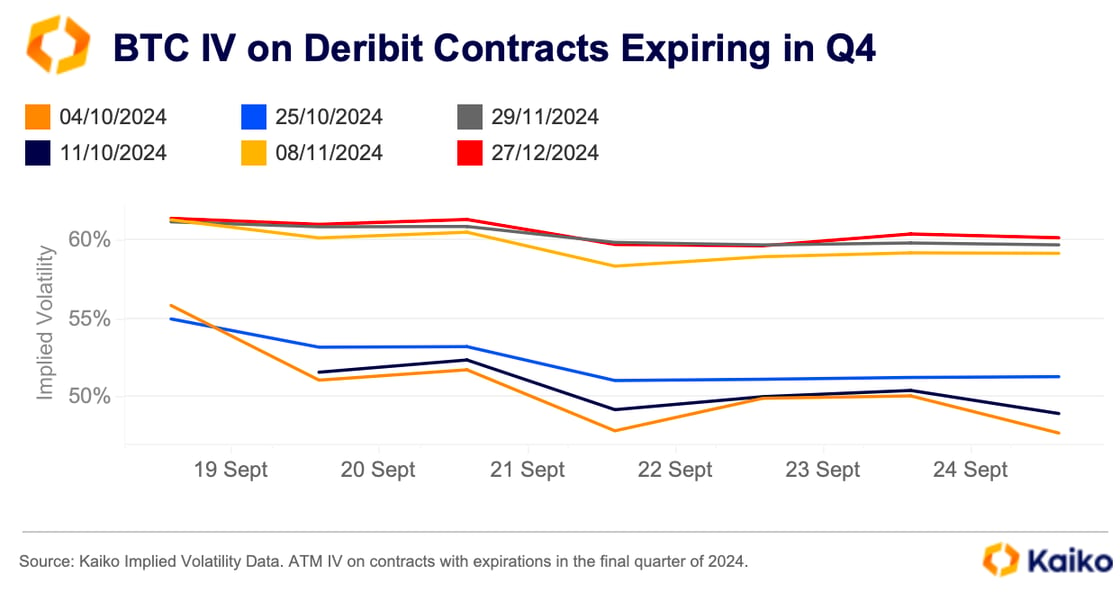
The November 8th contract also temporarily reversed, which is noteworthy. The special US election contract offered by Deribit expires just three days after Americans go to the polls and just one day after the Fed's next meeting.
The increasing slope on the right side of the IV Smile chart below suggests an increase in call demand, indicating growing bullish sentiment in the crypto options market. The IV smile for the November 8 contract is very high, suggesting that these two events could lead to increased volatility. The smiles on both the November 8th and November 29th contracts are tilted slightly to the right, indicating bullish sentiment in the market.
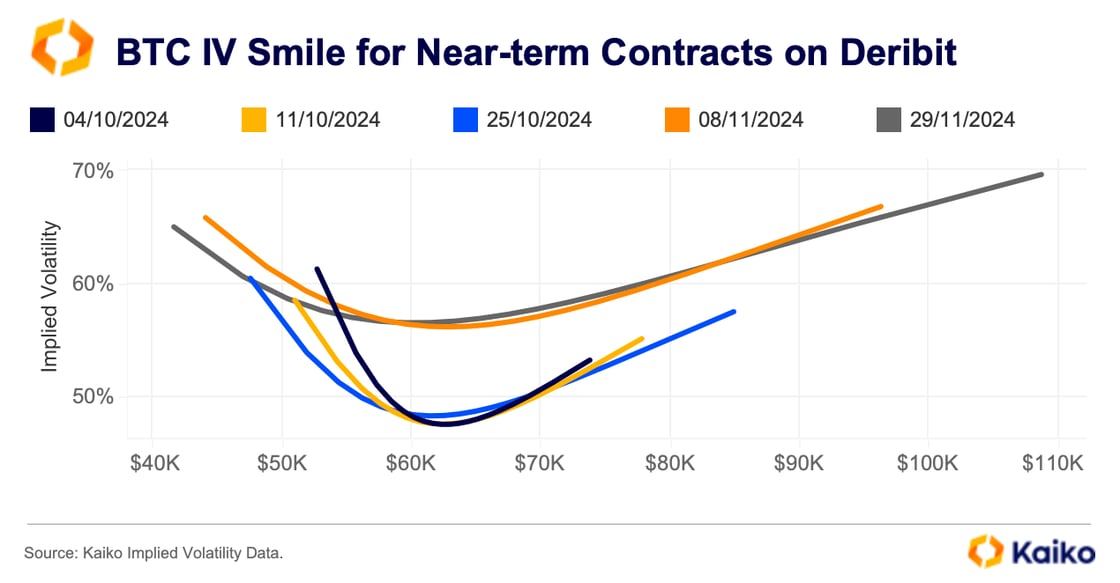
While interest rate cuts have been the main driver of this month's rise in prices, some of the increased bullish mood can be attributed to the US election.
The influence of cryptocurrencies in politics has increased significantly this year after former President Donald Trump pledged to support digital assets in the United States and also spoke at a Bitcoin conference in August. Most recently, Democratic candidate Kamala Harris said she supports U.S. digital asset innovation.
IV on US election contracts soared in the lead-up to the first debate between Kamala Harris and Donald Trump in September. Volume also increased on the day of the debate, with traders buying $38 million worth of put options after Donald Trump reportedly underperformed in the debate. However, just two days later, traders rushed to call after strong US inflation data.
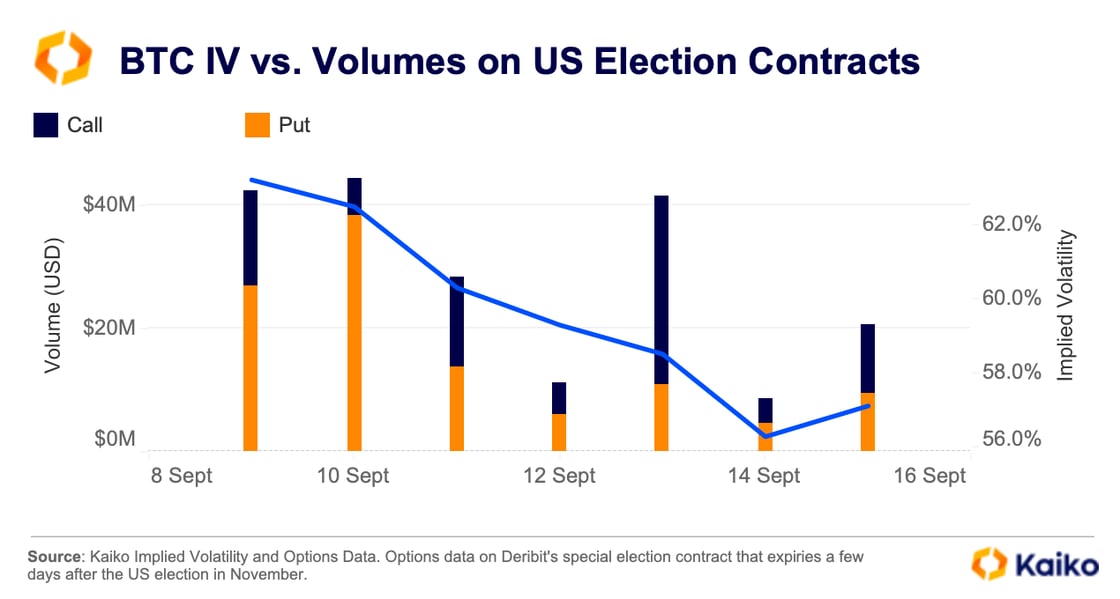
conclusion
IV can play an important role in determining and managing risk and measuring sentiment in options markets.
By looking at IV, you can see where the demand is in the options market. This demand is often a precursor to spot market movements, as we saw in the August crash, as demand increased just before BTC fell to its lowest since February.
IV is also useful in assessing market sentiment. For example, increased bullishness after the Fed's first rate cut and Harris' comments on digital assets mean the market is poised for Bitcoin to outperform in Q4 after a lackluster Q3. It suggests that.

